Residents of Bukit Merah opposed the rare earth plant project 30 years ago and now the people of Kuantan are opposing the Gebeng rare earth plant project. It seems that the authorities have not learned a lesson from the incident 30 years ago.
The Asian Rare Earth (ARE) plant owned by Mitsubishi Chemical in Bukit Merah was set up in 1974 and it started refining rare earth in 1982. We might say that the operation of the plant was approved because of the lack of knowledge and awareness 30 years ago, but why are we making the same mistake today when environmental awareness around the world is so high?
Australian mining company Lynas Corp has been granted a 12-year tax holiday and the construction of the rare earth plant in Gebeng is almost completed. The pilot production is scheduled for September this year.
Under a strong civil opposition, an independent panel compromising international experts has been set up to review the health and safety aspects of the plant. No operating licence will be approved if the plant is found not up to the required standards.
It is good for the government to listen to public opinion. However, why didn’t it rigorously examine, including referring to the case 30 years ago and experiences of other countries, when Lynas made the investment application? If the government revokes the investment licence, would it be considered a breach of contract and require compensation? It would also damage the country’s prestige.
I have found some omissions in the approval of the investment application. In addition to approving without referring to the Bukit Merah rare earth plant incident, they also did not consult the Australian government, members of the parliamentary and green organisations.
For example, Lynas said that the radioactive waste will be stored in its plant until it can identify together with the Atomic Energy Licensing Board (AELB) a suitable waste disposal site. How could the Department of Environment (DoE) and the AELB accept such an unconvincing disposal approach?
The Western Australian government has said that it refuses the importation and storage of other countries’ radioactive waste. Waste disposal requires a huge overhead and the investment return might not be able to offset the expenses. Take the ARE as an example, its cleanup process takes 13 years and resources have to be spent to permanently bury its troughs.
The government should have learned a lesson and review the approval process for high-risk investment projects that bring possible harm to the environment. The government should enhance transparency, oversight and enforcement to avoid repeating the same mistake, particularly when Taiwan’s Kuokuang Petrochemical Technology Co might also make application to set up a petrochemical plant here.
The DoE adopts the international standard and requires all applicants to submit an environmental impact assessment report. However, are the reports opened to the public or have they been verified? Take Hong Kong as an example, the Environment Protection Department allows its public to access to the environmental impact assessment reports of all development plans and submit their feedback. If the reports try to conceal the truth, they will be discovered easily.
Hong Kong also has stringent regulations, such as the Air Pollution Control Ordinance which is gradually tightening the allowed waste gas emission from power plants to improve its air quality. As for us, we can’t even control well the waste gas emission of factories, how are we going to manage the rare earth plant then?
We should abandon the thinking of making money first before we can talk about environmental protection as just like health, it cannot be measured by money.


Russia
Russian President Dmitry Medvedev (L) shakes hands with Yevgeniy Silayev, one of the Chernobyl nuclear disaster cleanup operation's veterans, during an awards ceremony in the Moscow Kremlin.

CHERNOBYL, Ukraine (Reuters) – Ukraine marked the 25th anniversary on Tuesday of the world's worst nuclear accident at its Chernobyl power plant as Japan pressed on with efforts to control the crisis at its Fukushima plant. (Scroll down for photos of Chernobyl anniversary events around the world).
On April 26 1986, the No. 4 reactor at the Chernobyl plant, then in the Soviet Union, exploded and caught fire after a safety test experiment went badly wrong.
The blast sent radiation billowing across Europe.
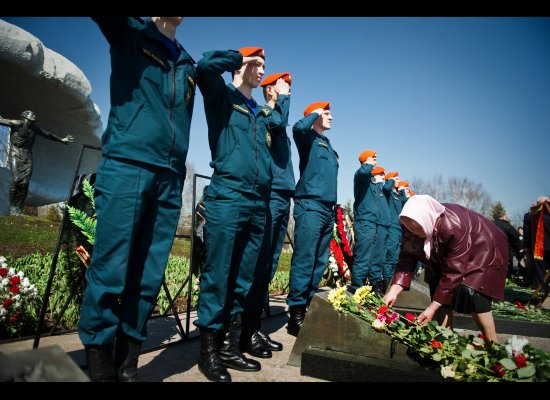
Russia
Relatives visit a grave during a memorial service at the Chernobyl victims' monument in Moscow
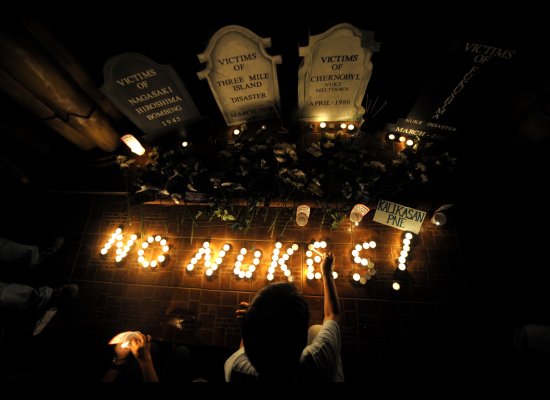


Japan
Pavel Vdovichenko (L), a 59-year-old survivor of the Chernobyl disaster, speaks during the anti-nuclear power protest rally in Tokyo.
dovichenko says people exposed to radiation from Japan's crippled nuclear plant will spend the rest of their lives fearing the "bombshell" of cancer and other dire illnesses.
.total of 31 people died immediately but many more died of radiation-related sicknesses such as cancer, many of them in what is today Belarus.
Tens of thousands were evacuated, never to return, from Prypyat, the town closest to the site which then had a population of 50,000.
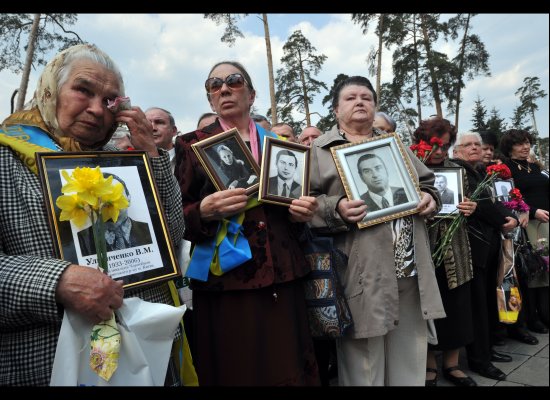
Last week the world community, spurred by the nuclear crisis at Japan's Fukushima plant, pledged 550 million euros ($780 million) to help build a new containment shell over the stricken reactor at the Chernobyl site to replace a makeshift one that has begun to leak radiation.
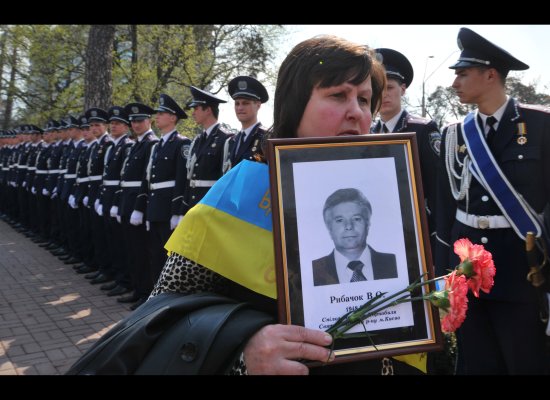
"Chernobyl was a challenge of planetary dimensions. The answer to this challenge can be provided only by the world community," Ukrainian President Viktor Yanukovich said on Tuesday.
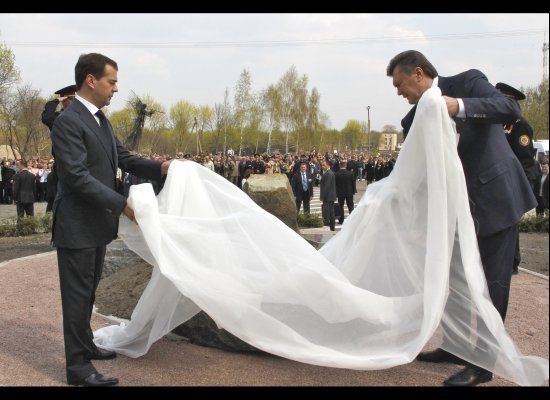
Ukraine
Russian President Dmitry Medvedev (L) and his Ukrainian counterpart Viktor Yanukovych (R) unveil the foundation of a future monument to the Chernobyl nuclear disaster cleanup operation's participants in Chernobyl.
"For a long time, Ukraine was alone with this calamity, but happily we are not alone now," he said in a statement on the presidential website http://www.president.gov.uaYanukovich was to visit Chernobyl later on Tuesday with Russian President Dmitry Medvedev and Russian Orthodox Patriarch Kirill.Chernobyl has remained the benchmark for nuclear accidents.
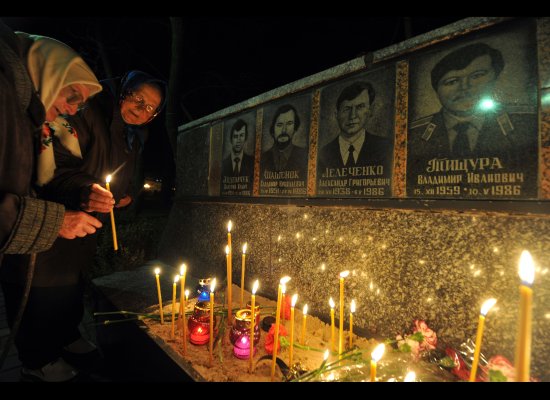
Though Chernobyl town itself was relatively untouched by the accident, Prypyat is now a ghost town at the center of a largely uninhabited exclusion zone with a radius of 30 km (19 miles).On April 12 Japan raised the severity rating at its Fukishima plant to seven, the same level as that of Chernobyl.
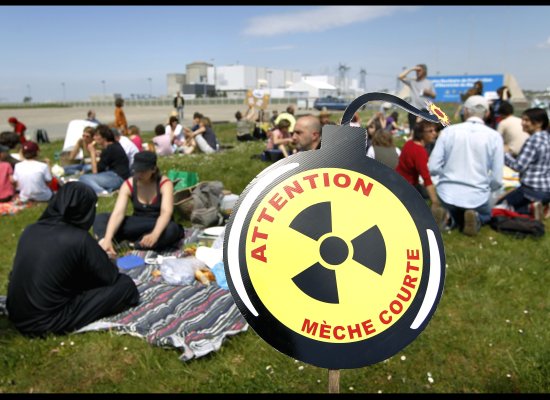


DAY OF MOURNING
"This is a day of mourning for us. We are in mourning for the people who 25 years ago fought to protect us," said Gennady Pikul, 50, referring to firefighters and other 'liquidators' who at risk to their lives fought to control the blazing reactor.
"We will do everything we can so that this is never repeated," he said.
The 550 million euros raised at the donors' conference last week will be added to cash already contributed for construction of a new 110-meter high encasement over the reactor and a storage facility for spent fuel.
Soviet officials in 1986 withheld reporting the accident for two days, provoking Western accusations that a secrecy-obsessed Moscow had hoped to cover the accident up.
Medvedev, meeting survivors of Chernobyl clean-up efforts in the Kremlin on Monday, said there must be greater transparency in nuclear emergencies.
"I think that our state must learn the lessons from what happened -- from the now-distant Chernobyl incident in 1986 and the recent tragedies in Japan. Perhaps the most important lesson is the need to tell
There were high hopes when the Malaysian Anti-Corruption Commission (MACC) was formed on January 1, 2009. It took over from the much-maligned and toothless Anti-Corruption Agency (ACA) that failed for lack of laws and willpower in the war against graft.
Those hopes for the MACC died the same day Teoh Beng Hock fell to his death on July 16, 2009.
The 30-year-old was taken as a witness on July 15, 2009 against his employer, Selangor executive councillor Ean Yong Hian Wah, who allegedly abused state funds amounting to RM2,400.
But the DAP aide was found dead after overnight investigation. His bride-to-be is now left with a fatherless child. His parents and siblings are missing a kin.
And Malaysians are left wondering how it all happened. One death in the war against corruption?
But today, the Royal Commission of Inquiry (RCI) found out that the MACC had failed to find evidence that Ean Yong had ever abused state funds.
“Results from investigations showed there was no testimony that could link YB Ean to wrongdoing under Section 18 of the MACC Act 2009,” said Ahmad Shafik Abdul Rahman at the inquiry today.
“The investigation outcome showed that programmes and projects, for which YB Ean made claims, were done by contractors... instructions from the DPP were to stop the investigation because there was no testimony showing that YB Ean had committed an offence,” he added.
So, why did Teoh have to die? Was his death in vain?
The inquest into Teoh’s death returned an open verdict of it being neither suicide or homicide. At this point, it doesn’t matter if the RCI can find out anything different from the inquest because the inquiry has shown that the investigation against Ean Yong appeared to be political.
It didn’t appear to be based on facts or evidence. So, why did Teoh have to die if there was nothing anyway in the probe against Ean Yong?
No one knows but it has left blood on the hands of the MACC. After all, no one has ever died in an ACA investigation. Ever.

No comments:
Post a Comment